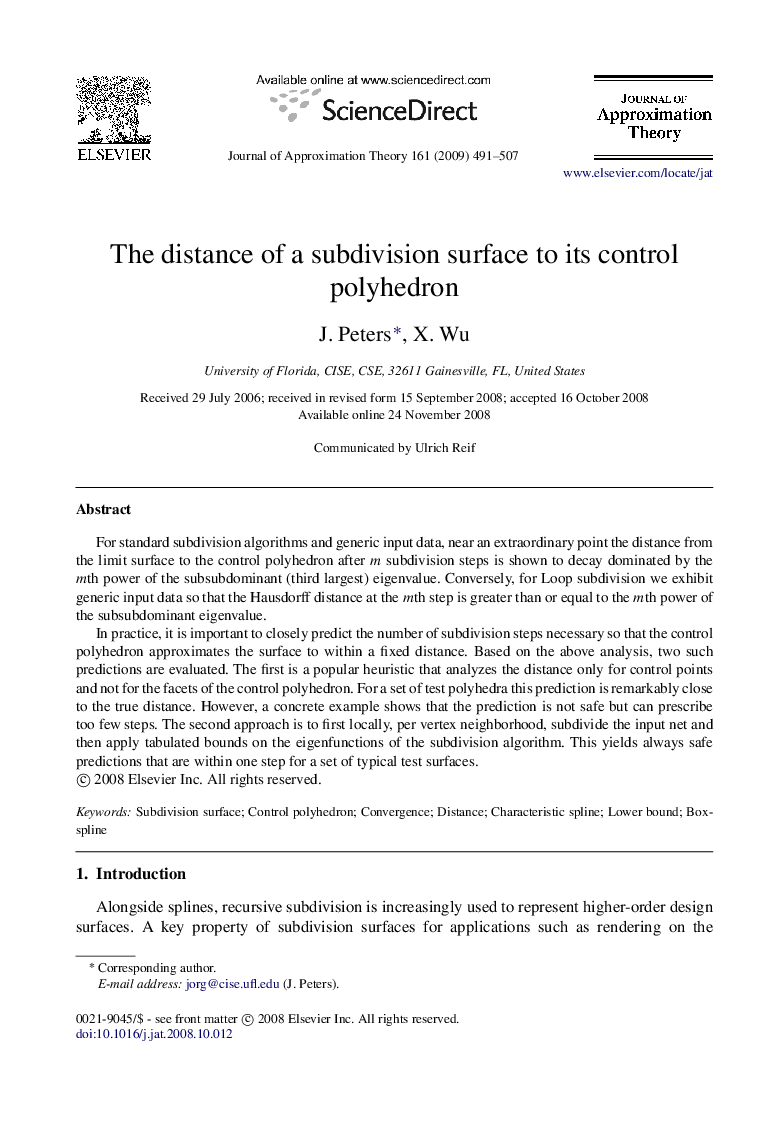| Article ID | Journal | Published Year | Pages | File Type |
|---|---|---|---|---|
| 4607788 | Journal of Approximation Theory | 2009 | 17 Pages |
For standard subdivision algorithms and generic input data, near an extraordinary point the distance from the limit surface to the control polyhedron after mm subdivision steps is shown to decay dominated by the mmth power of the subsubdominant (third largest) eigenvalue. Conversely, for Loop subdivision we exhibit generic input data so that the Hausdorff distance at the mmth step is greater than or equal to the mmth power of the subsubdominant eigenvalue.In practice, it is important to closely predict the number of subdivision steps necessary so that the control polyhedron approximates the surface to within a fixed distance. Based on the above analysis, two such predictions are evaluated. The first is a popular heuristic that analyzes the distance only for control points and not for the facets of the control polyhedron. For a set of test polyhedra this prediction is remarkably close to the true distance. However, a concrete example shows that the prediction is not safe but can prescribe too few steps. The second approach is to first locally, per vertex neighborhood, subdivide the input net and then apply tabulated bounds on the eigenfunctions of the subdivision algorithm. This yields always safe predictions that are within one step for a set of typical test surfaces.
